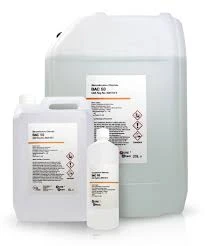Understanding the Benefits and Uses of PACL Poly Aluminum Chloride in Water Treatment
The Versatility and Applications of PACL Polyaluminum Chloride
Polyaluminum chloride, commonly referred to as PACL, is an inorganic compound that has garnered significant attention due to its wide range of applications, particularly in water treatment and purification processes. As a polymerized aluminum compound, PACL serves as a coagulant, facilitating the removal of impurities from water. This article delves into the properties, manufacturing processes, and various applications of PACL, emphasizing its importance in both industrial and municipal water treatment settings.
Chemical Composition and Properties
PACL is characterized by its varying degree of polymerization, which can greatly influence its effectiveness as a coagulant. Its general formula can be represented as Aln(OH)mCl(3n-m), indicating that it consists of aluminum ions (Al³⁺), hydroxyl ions (OH⁻), and chloride ions (Cl⁻). The polymeric nature of PACL distinguishes it from traditional coagulants like alum (aluminum sulfate) by offering enhanced efficiency at lower dosages. PACL typically appears as a yellowish or colorless liquid, and it is highly soluble in water, which makes it convenient for use in a variety of applications.
Manufacturing Process
The production of PACL usually involves the reaction of aluminum hydroxide with hydrochloric acid, often in the presence of water. This process allows for the creation of a product that can be tailored based on the desired concentration of aluminum and chloride ions. The resulting product can be further modified to suit specific applications, making PACL a highly versatile coagulant. The manufacturing conditions, such as temperature, pH, and the concentration of reactants, play pivotal roles in determining the final properties of the PACL product.
Applications in Water Treatment
1. Municipal Water Treatment The primary application of PACL lies in municipal water treatment facilities, where it is employed to remove suspended solids, organic matter, and microorganisms from raw water sources. PACL acts by destabilizing particles present in the water, leading to their aggregation into larger flocs that can be easily removed through sedimentation and filtration processes.
pacl polyaluminum chloride

2. Industrial Water Treatment In industrial settings, PACL is used in processes such as textile manufacturing, paper production, and food processing. It helps in controlling the quality of water used in these processes and ensures that effluent discharged meets environmental regulations. Furthermore, PACL's ability to work effectively in varying pH levels makes it suitable for diverse industrial applications.
3. Wastewater Treatment PACL plays a crucial role in wastewater treatment plants, where it aids in the removal of contaminants from industrial effluents and sewage. Its effectiveness in precipitating heavy metals and phosphates contributes to the overall improvement of water quality before it is released into natural water bodies.
4. Drinking Water Systems As a coagulant, PACL is essential in ensuring the safety of drinking water supplies. Its use in removing micro-pollutants and harmful microorganisms helps to ensure that drinking water meets health standards. Additionally, its efficiency at lower dosages results in reduced sludge production, which is beneficial for both operational efficiency and environmental sustainability.
Advantages Over Traditional Coagulants
PACL offers several advantages over traditional coagulants. Its efficiency at lower concentrations leads to reduced chemical costs and less environmental impact. The reduced sludge production associated with PACL not only simplifies waste management but also lowers disposal costs. Moreover, its ability to function effectively in a wide range of pH levels enhances its applicability across different water treatment scenarios.
Conclusion
The importance of PACL in the field of water treatment cannot be overstated. As a highly effective coagulant, it plays a pivotal role in ensuring the cleanliness and safety of water supplies, both for municipal and industrial applications. Given its versatility and operational advantages, PACL is likely to continue being a staple in water treatment processes worldwide, contributing to improved public health and environmental sustainability. As the demand for clean and safe water rises globally, the relevance of PACL in water purification technologies becomes increasingly significant, highlighting the need for ongoing research and development in this essential field.
-
Water Treatment with Flocculant Water TreatmentNewsJun.12,2025
-
Polymaleic AnhydrideNewsJun.12,2025
-
Polyaspartic AcidNewsJun.12,2025
-
Enhance Industrial Processes with IsothiazolinonesNewsJun.12,2025
-
Enhance Industrial Processes with PBTCA SolutionsNewsJun.12,2025
-
Dodecyldimethylbenzylammonium Chloride SolutionsNewsJun.12,2025





